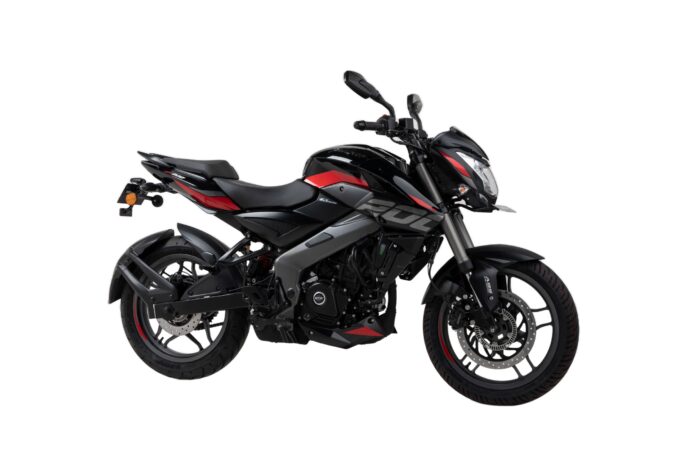2023 Bajaj Pulsar NS200 and NS160 are updated with USD forks and dual-channel ABS when it comes to mechanicals. The other changes are BS6 Phase 2 update where the motorcycle gets OBD-2 port. Changes to the instrument cluster include a gear shift indicator and Distance to Empty which shows 400 KM on a full tank. A disc brake is a regular unit and not a petal disc anymore. The Bybre brakes have been changed to Grimeca units at the front and back. The process has led the 2023 Bajaj Pulsar NS200 to drop 1.5 kgs of weight from 159.5 kg to 158 kgs. The initial bikes that are going on sale at the dealership have MRF Nylogrip Zapper tyres which are most stickier you can find in the MRF range, making it a premium option for the NS family of motorcycles.
The engine remains the same and it delivers a 37 km/l in real-life conditions as this is not an ARAI quoted the wrong figure. The motor continues to make 24.5 PS of power and 18.5 Nm of torque through a liquid-cooled, 4-valve engine that is derived from the KTM which delivers more push at the mid and top-end of the rev range. Bajaj has still skipped out on a nice TFT/LCD screen which is seen on motorcycles of this segment. LED Lights, LED indicators, traction control, riding modes, hazard light switch and slipper clutch are now missing on Bajaj’s flagship motorcycle. The Pulsar NS200 is priced at ₹1,47,347 (ex-showroom Delhi), and the Pulsar NS160 is priced at ₹1,34,675 (ex-showroom Delhi). NS200 is gone up by Rs 10,000 while the NS160 has gone up by Rs. 7000.
Bajaj Pulsar NS200 and NS160 get these updates and they go against the likes of their own family members such as the KTM Duke 200 and KTM Duke 125. The competition such as TVS Apache RTR 200/160 and Honda Hornet 2.0/300F, Honda CB200X and Suzuki Gixxer 250/150. Hero continues to be here with the 18 PS Xtreme 200S.





